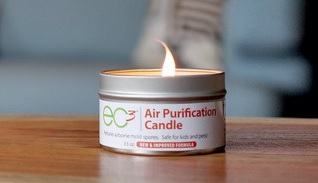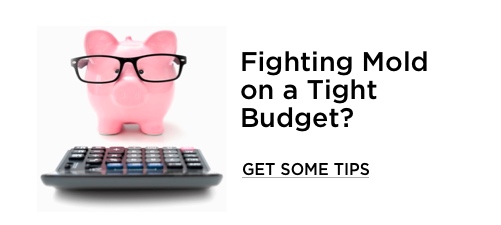Sinus Infections and Mold Exposure
Jul 1st 2024
Many people experience sinus infections, which often occurs when fluid builds up in the sinuses. The sinuses are air-filled pockets in the face, and when fluid builds up and is not released, germs and bacteria can build up and cause an infection.
But these are not the only things that can make a sinus infection more serious than a cold. Black mold can also pose a health risk and can cause serious respiratory issues, such as sinus infections.
When mold is present in the air, it can trigger allergic reactions and make sinus infections more serious. It can exacerbate symptoms such as nasal congestion, coughs, wheezing, sneezing, and sinus pains.
Let’s look at the connection between mold exposure and sinus infections, how to manage the symptoms, and the possible ways to prevent the issue.

What is “Toxic” Mold?
Black or “toxic” mold is a type of fungus that is naturally present in the outdoor environment. Though there are many different types of mold, the one that is deemed black or toxic mold and that causes many health issues when present in an indoor environment is Stachybotrys chartarum.
It can appear as green or black, and grows and spreads when the temperature is warm enough and the environment is very humid or has enough moisture. It could grow on any material that contains cellulose, and this includes fruits, wood, paper products, and even other plants. These factors make it particularly insidious when there is water damage to a built environment.
Can Mold Cause Sinus Infections?
Sinus infections can be caused by germs and bacteria, but sinus infections can also be caused by fungus. A fungal sinus infection or fungal sinusitis occurs when the sinuses are exposed to high levels of mold or yeast, as a result of breathing in the fungal spores.
Sinus infection from mold exposure displays similar symptoms to other sinus infections caused by bacteria. This includes nasal congestion and sinus pain in the cheeks and between the eyes. For relatively healthy individuals, sinus infections and fungal infections can clear up given the proper treatment.
However, for immune-compromised individuals or those living in a high-mold indoor environment they can be at risk for serious complications. Some forms of fungal sinusitis can even destroy the nasal lining of the nose, which can allow the infection to spread and become systemic.
So can mold cause sinus infections? Absolutely, and so once you experience the symptoms of a sinus infection, it’s best to see a physician to find out what you have.
What is the Proper Treatment for Sinus Infections?
When you're diagnosed with a sinus infection, the usual treatment recommended includes using antibiotics, nasal decongestants, steroids, and antihistamines. Antibiotics are often recommended to be taken for a number of days, depending on the longevity of the infection.
Nasal decongestants, which are also available in spray forms, can help with the swelling of the nasal passages, allowing for the liquid to be drained from the sinuses. These should only be used as directed and only for a few days, as they can result in the nasal passages shutting down.
Antihistamines are for those suffering from allergies which lead to the sinus infection. They can fight off symptoms and block inflammation.
But what about fungal sinus infections? The proper treatment will vary, as it depends on the health of the individual. But for those experiencing black mold or mold-exposure-related sinus infections, treatment could include the following:
Nasal washings or rinsing the nasal passages allows the removal of crusts and mucus that has built up in the sinuses. A mixture of water, salt, and sometimes a natural antifungal, cleans up the nasal cavities and washes away environmental buildup before it reaches the sinuses.
Sometimes physicians also recommend antifungal medications which are useful in killing off mold and other fungi. In some cases, they are recommended along with surgery, which is often an option for those suffering from serious fungal sinusitis. Surgery can remove the fungus ball and damaged tissue due to the infection.
But the most important part in treating fungal sinus infections is ensuring that the environment is clear from mold. Since prevention is the key, you need to do several preventive measures in your home to ensure that you can control and prevent the growth of mold or any fungi in your home.

How Can I Prevent Fungal Sinus Infections?
Although there is no sure way to prevent fungal sinus infections, you can do much to prevent the growth of mold and fungi in your immediate environment. You can do the following actions too if you or anyone in your family is experiencing a sinus infection.
Light up a mold-reducing candle in your home.
Mold-reducing candles can help reduce the number of mold spores and mycotoxins in the air.
Since these candles are made from natural ingredients with no added fragrances, the candles have no effect on the chemical sensitivities of those suffering from sinusitis. The smoke and the scent of the candle will not exacerbate the inflammation in their sinuses or make their symptoms more serious.
Use a mold spray when cleaning your home.
Making your home free and clear of mold is one thing, but using a mold spray ensures that any mold spores in the indoor air or on any surface is reduced and neutralized. And when combined with mold-reducing candles, this can increase the effectiveness of the products, which can reduce the symptoms felt by sinusitis sufferers and those with other respiratory issues.
Fix and clean up the area where the mold growth started.
The most important part of preventing fungal sinus infections is cleaning up the area where the mold growth started. This could be an area where there is a water leak, or where damage has created conditions ideal for fungal growth.
Clear them up and fix them, ensuring that any water leak is fixed properly so moisture is controlled. Then clean up the area using mold spray and water, ensuring that any spores are removed.
You can then light up mold-reducing candles which can improve the atmosphere but also reduce mold spores that may still be present in the air. In the following days, ensure that the area has proper air circulation by opening up doors and windows or using fans to instigate air circulation.
Always Check with Your Doctor
Reducing exposure to indoor mold and addressing sinus symptoms caused by mold exposure requires a combination of preventive measures, home maintenance, and medical intervention.
You need to take proactive steps to identify and eliminate mold sources, improve indoor air quality, and seek appropriate medical treatment especially if you think your sinus infection is mold-related.
Your actions can minimize the risk of sinus infections and alleviate associated symptoms, but you need to see your doctor immediately if you experience persistent sinus infection symptoms. Get a medical consultation with a physician who could prescribe the best treatment for your condition and visit MicroBalance for the best all natural anti-mold sprays and candles that can improve your indoor air quality and reduce the presence of mold in your home.



